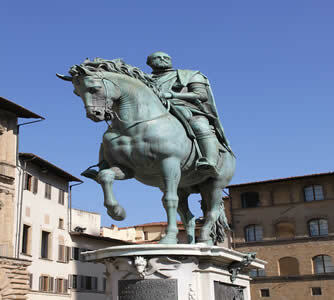THE Battle of Stalingrad took place between July 17, 1942 and February 2, 1943.
It was the biggest and bloodiest battle of World War II and changed the course of the conflict after the Soviet victory.
Today, Stalingrad is now called Volgograd, as it is on the banks of the Volga River.
Summary
Before the war started, Hitler and Stalin had signed the Molotov-Ribbentrop Pact. It consisted of a non-aggression agreement. The two nations pledged not to attack each other if there was a conflict in Europe.
This treaty was received with surprise by communists around the world, as they hoped that Stalin would stand up to the Nazi power.
However, after the resistance of England, Hitler is forced to postpone the invasion plans of the island and turns to the west, breaking the pact.
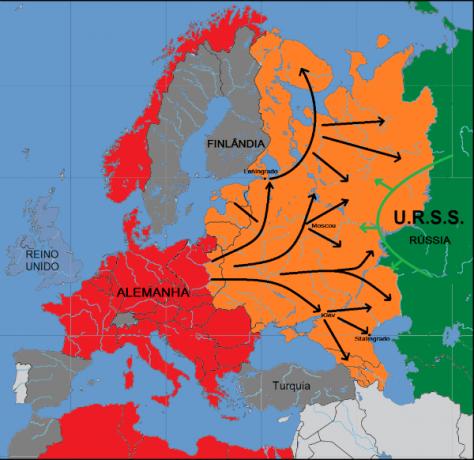
Battle of Stalingrad Map
Hostilities began with the German invasion towards Stalingrad. This was one of the most industrialized cities in the USSR and responsible for a large part of the military production of the Soviet Army.
Furthermore, the city was named after Stalin, which had a symbolic charge for the Germans.
The battle
Despite initial advances by German tanks and soldiers, a part of the German army was delayed. This gave the Soviets time to reorganize.
When German troops arrived in Stalingrad they met fierce resistance and the city was fought over street by street, house by house. Not even German aviation, constantly bombing the city, managed to break through the Soviet defence.
These hid in the sewers and used the rubble to inflict casualties on the German army with their snipers. In this way, conquering Stalingrad became an obsession for hitler.
For his part, the German general von Paulus, realized that the luck no longer depended on the Germans. The orders from Berlin were clear: the general and his men were to guard positions. However, several soldiers, despite the death penalty for deserters, surrendered.
However, Soviet troops went on the offensive and took over air control. General von Paulus had to surrender with 200,000 German soldiers on January 31, 1943.
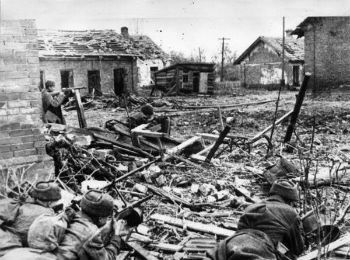
The Battle of Stalingrad involved the civilian population and left the city completely destroyed
Among the reasons considered decisive for the Soviet victory are:
- The concentration of Soviet troops on the Eastern Front after the lack of expectation of Allied assistance to defend the country from German invasion;
- The Soviet government prioritized rigging the army with support from the military industry. Factories and workers were displaced, leaving the front lines of the war;
- The Soviet army prioritized strategic defense;
- The strategic mistakes of the German army benefited the Soviets, who in the second half of 1942 were drawing up the Uranus plan.
- As part of the Uranus plan, 1 million men, 10,000 horses, 430 tanks, 6,000 cannons, and 1,4 thousand Katiucha rockets awaited the Germans.
- The German army faced supply problems because it wrongly chose the method of food delivery. As they were launched from the air, 350,000 soldiers were unable to receive 350 tons of food for their daily needs.
The winter
When World War II ended, Americans and Soviets turned from allies to enemies because of the Cold War.
Thus, part of American historiography attributed winter to the Soviet victory at Stalingrad. This interpretation was echoed in the defeat suffered by Napoleon in 1812.
It is true that winter helped the Soviets, but they had the advantage of fighting on their own ground and they also had the heroic help of the civilian population.
Importance of Conflict within World War II
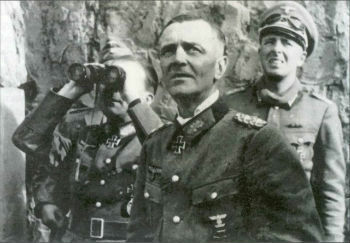
German General Friedrich von Paulus taken prisoner by the Soviets
The Battle of Stalingrad marks a turning point in the theater of war.
The Red Army defeated the German troops after starting, on November 19, 1942, the counteroffensive that would only end in the spring of the following year.
Along with the victory at the Battle of Leningrad it showed the world that the Soviet army could repel the German army.
After 1943, the Germans were no longer able to advance on any front and began to retreat.
With the landing of American troops in Italy and, later, in Normandy, Hitler finds himself coerced on both fronts of battle.
In North Africa, the Allies are also recovering strategic positions, giving hope to all those who suffered the conflict.
Curiosities
The Battle of Stalingrad has impressive numbers. Let's look at some:
- 200 days and nights of combat;
- Death of 40,000 Soviet civilians, 230,000 German soldiers and 17,000 Red Army soldiers;
- 26,000 tanks and 2,500 planes on both sides;
- The German army alone deployed 1 million soldiers to fight in Stalingrad;
- They had the support of 10, 2 thousand weapons, 675 tanks and 1,200 planes;
- The Germans lost a quarter of their fronts during the battle;
- In total, the battle involved 2.1 million people.
Stalingrad Today
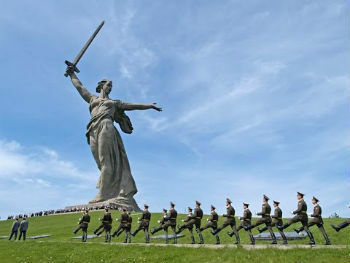
The Mother Motherland statue was inaugurated in 1967
The city of Stalingrad changed its name when Nikita Khrushchev decided to purge Stalin's name from Soviet territory and has since been called Volgograd.
Despite this, the famous dispute marks their daily life, whether in the memory of the inhabitants or in the monuments scattered throughout the region.
At the top of a hill rises the huge statue of the "Mother Motherland", 85 meters high. It composes a memorial for all the Soviet soldiers who fought in that battle.
Films
- Stalingrad - The Final Battle, by Joseph Vilsmaier, 1993.
- Circle of fire, by Jean-Jacques Annaud. 2001.
- Stalingrad, by Fedor Bondarchuk. 2013.
Read more:
- Beginning of World War II
- Major Battles of World War II
- Nazism
- USSR

